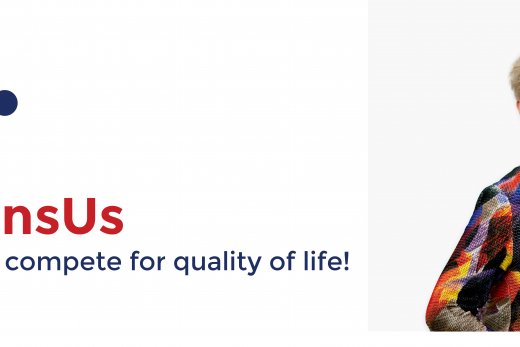06/07/2019
Personal Story: Gerda Geven
The theme of SensUs 2019 is ‘Managing rheumatic disease by measuring with ease’. SensUs 2019 challenges teams to develop biosensors for the detection of adalimumab, an important drug for patients with rheumatoid arthritis. We spoke with Gerda Geven about her experiences as a rheumatoid arthritis patient.
My name is Gerda, I am 59 years old. At this moment I work at a shared service center for public libraries in the marketing and communication department. In addition, I run two small companies, a marketing and communication company, ROOTime, and I have a small publishing agency. Furthermore, I write my own regional novels with a friend of mine. In my spare time I like to cook and do some wine tasting. I am also a patient partner for the National Association ReumaZorg Nederland, which is the Dutch patient organization for all people in the Netherlands with rheumatism.
I was diagnosed with rheumatoid arthritis (RA) when I was 16 years old. I remember the first symptoms when I was about 10 years old. When the pain was unbearable, I went to see the doctor, but at first they thought it was nothing severe. At that time, in the 70s, a RA diagnosis was not common among children. Directly after my diagnosis, a doctor recommended me to keep moving despite the pain. Looking back, I am very grateful for this. A friend of mine was also diagnosed with RA, she was given bed rest for a long time and this made her very stiff in her movements and this is not reversible.
In 2000, TNF-alpha inhibitors were introduced for the treatment of RA, which I also started to use then. The first biological I used was not effective enough. I had to go to the hospital for injections once every eight weeks, but after six weeks I already needed a new shot due to the pain. Then I started using another biological, etanercept. However, I suffered from blood sedimentation, therefore, the doctor suggested to try adalimumab. Adalimumab alone was not effective enough, so it was combined with methotrexate (MTX). MTX works as a trigger for adalimumab. The combination of adalimumab and MTX did not stop the blood-sedimentation, but is was effective against the pain. Unfortunately, at the end of 2018, I started getting allergic reactions to MTX. Now, I am using MTX tablets together with tocilizumab which seems to work quite well. I used these tablets 22 years ago as well.
‘Without biologicals, I would not be so mobile right now.’
The transition from etanercept to adalimumab went very smoothly. I did not experience any discomfort during that time. The only burden was the painful adalimumab injections. I had to inject myself every two weeks. The pain was unbearable, but for me it was an acceptable price to pay, as it did relief me from the joint inflammation pain. Trying to make the injections more comfortable, I tried to use the injection pen, but this was no improvement. At this time, my partner started to inject the adalimumab, as it was quite hard to do yourself when it is so painful. One day, when my partner gave the injection, the gruesome pain was suddenly gone. I still do not know how, I suspect it had something to do with the substances in the injection.
With the current medication for RA, my future perspective is good. I know it is a progressive disease, and it will only get worse with the years, but I believe with the current innovative treatments and technologies, I will not experience a lot of discomfort. For example, I currently use a speak monitor for my writing, as typing is no longer possible. My new kitchen also contains a lot of adjustments that make cooking much more comfortable, as this is very important to me.
‘I have never seen RA as a burden.’
A biosensor can make the use of medication more effective and will help for financial reasons. Such a sensor can be applicable for many treatments, as it is an objective measuring tool which tells the doctor and patients what steps need to be taken in the treatment. However, it should be considered in which phases of the treatment process the sensor should be applied and how certain information is shared with the patient. As sometimes, the results might be confronting for a patient at a certain phase in treatment. A patient might feel fine, but a biosensor might show that a treatment is not working at all. I think that biosensors will be very useful in various fields of healthcare. Innovation is only achieved by trying a lot of things in a lot of different ways. SensUs stimulates innovation in healthcare by bringing together students with a lot of different backgrounds. So keep up the good work!
‘A competition suggests there is a winner, but in this field, losers are winners as well, because many different solutions should be tried.’
This interview was conducted in association with the National Association ReumaZorg Nederland. The National Association ReumaZorg Nederland is the Dutch patient organization for all people in the Netherlands with rheumatism. They give rheumatism a face and a voice in their patient advocacy activities as well as in research and education. Would you like to know more about their activities? Feel free to contact them: [email protected] or have a look on their website: www.reumazorgnederland.nl.

Facebook
YouTube
LinkedIn
Instagram